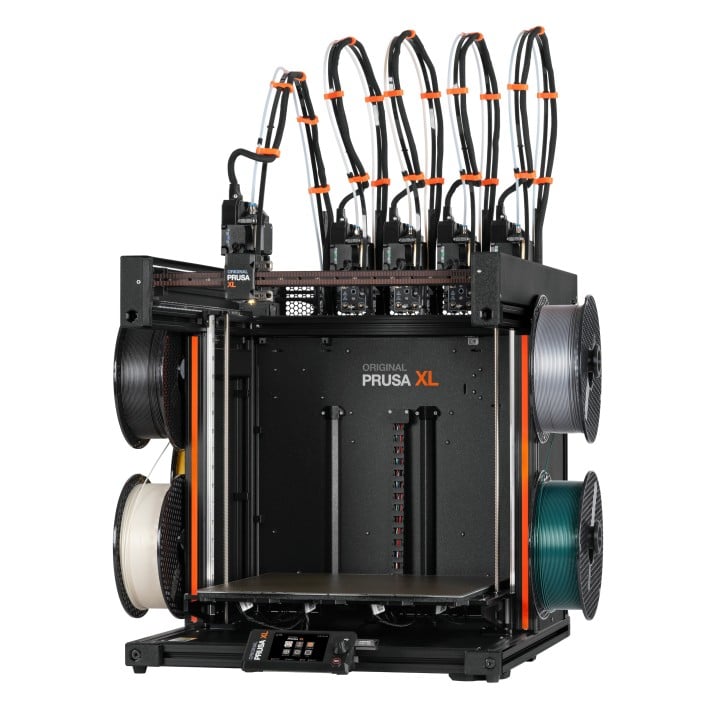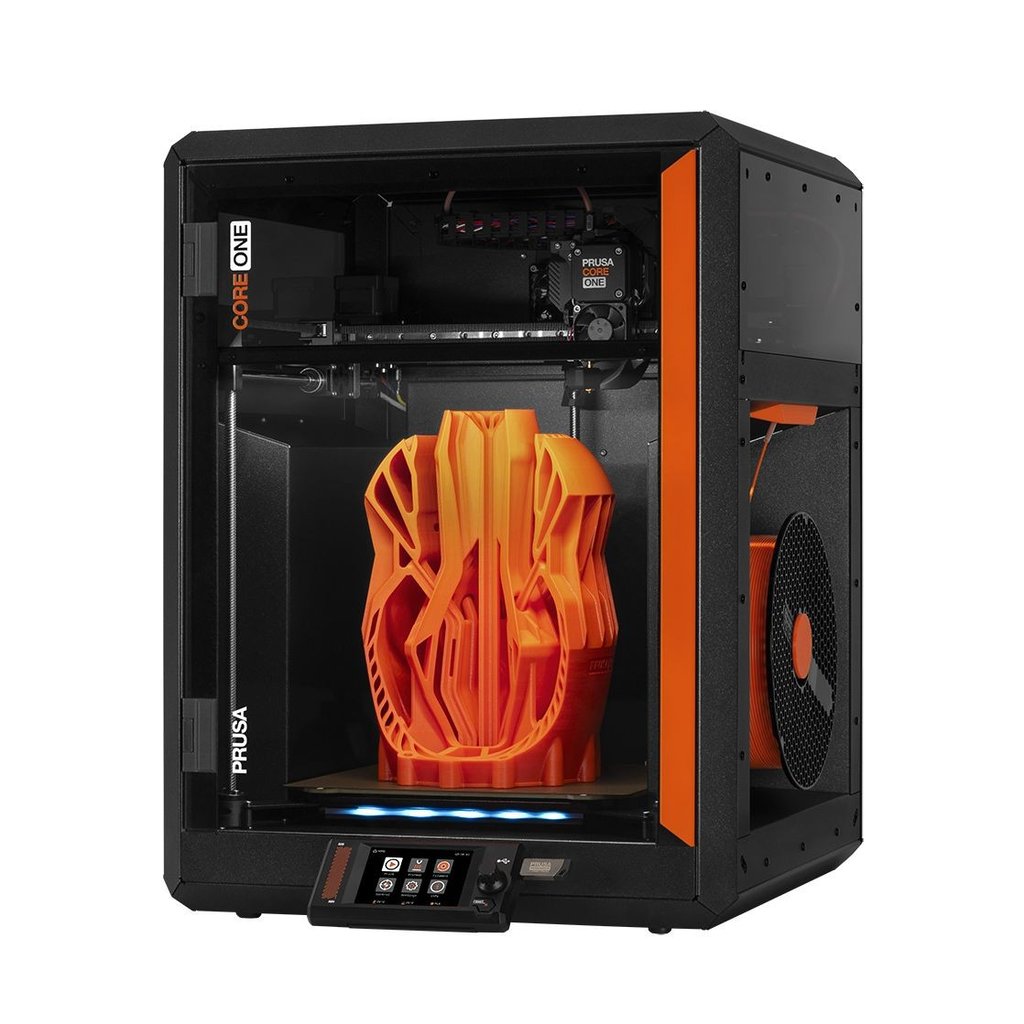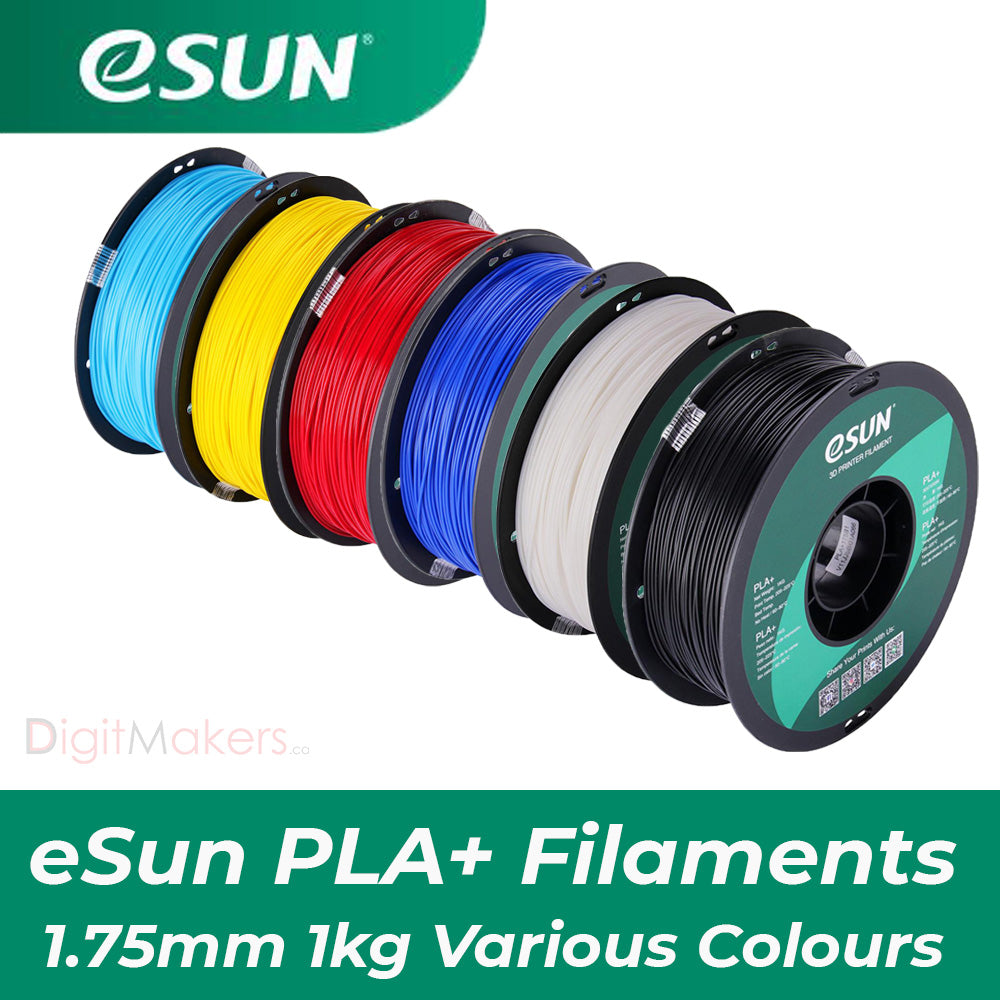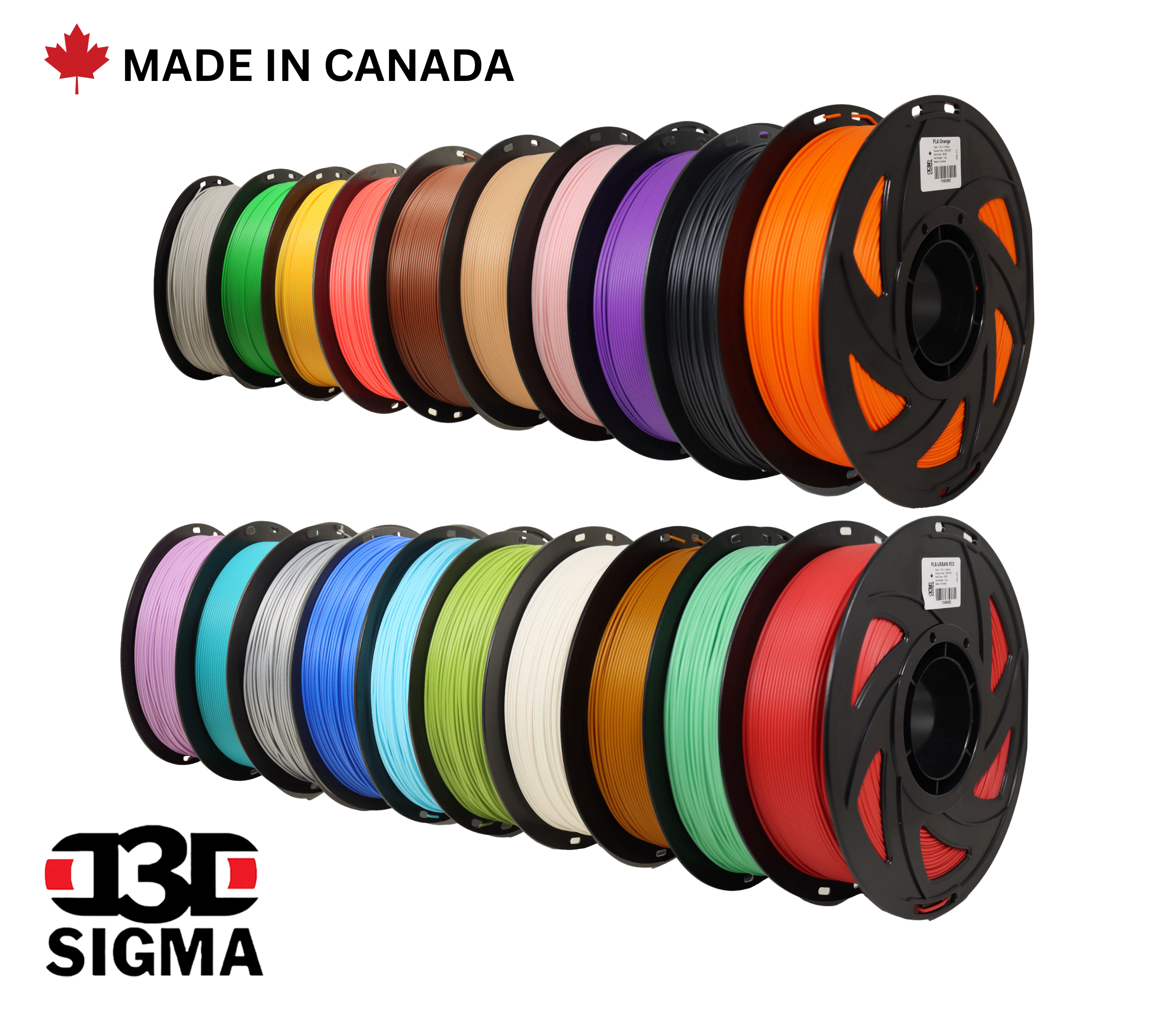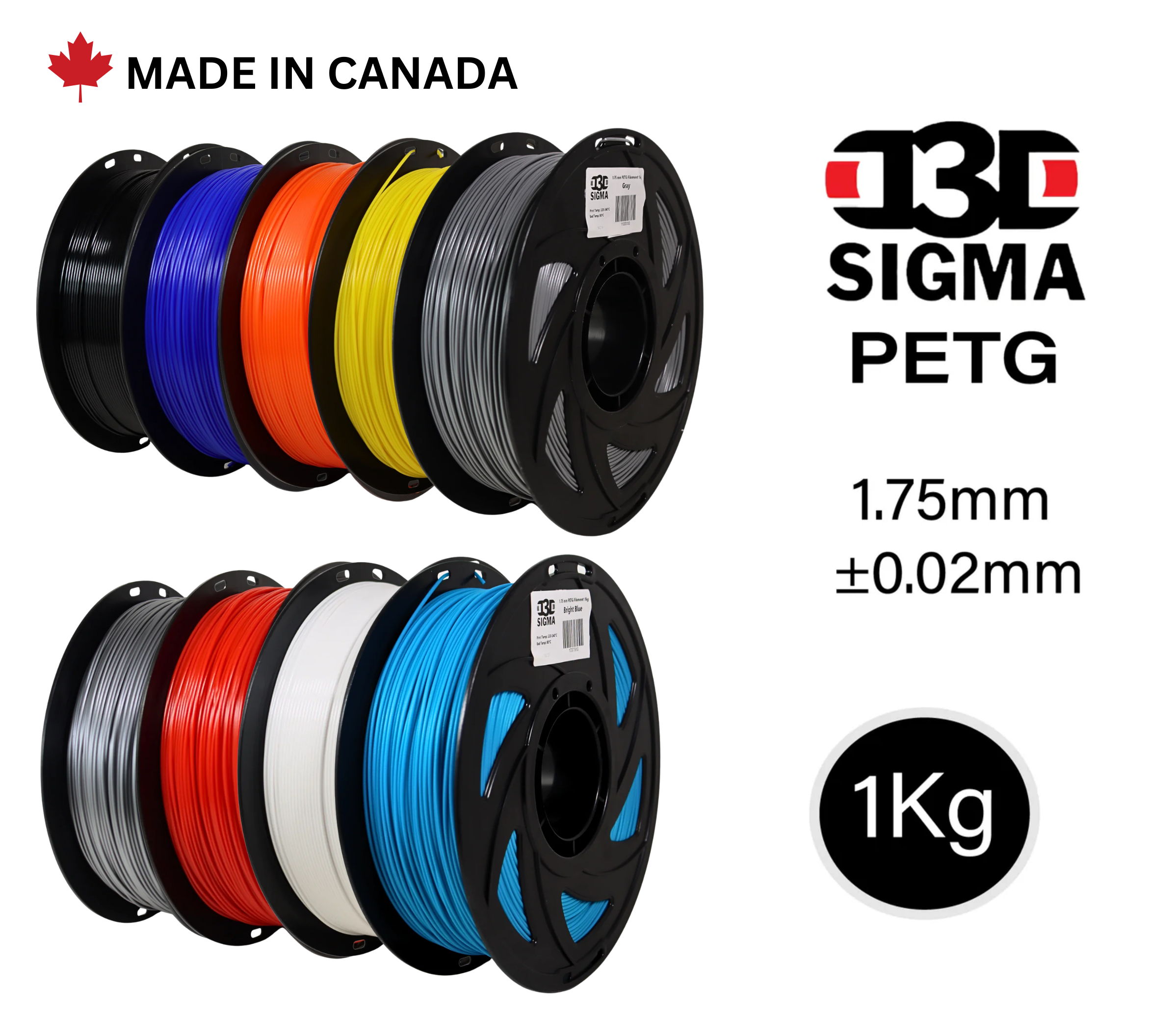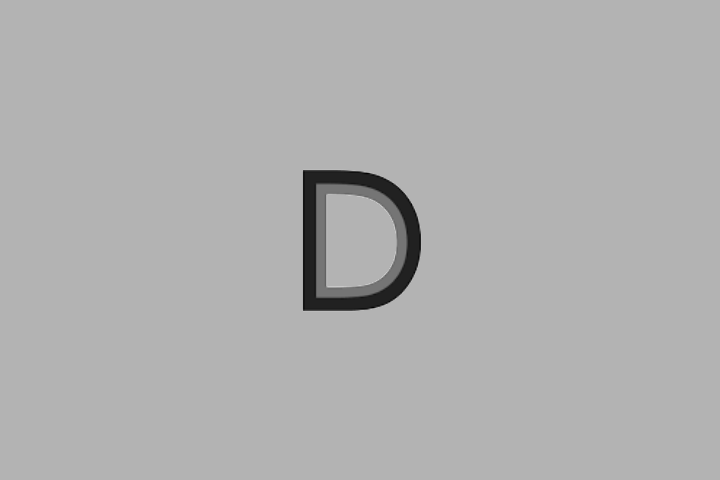When you need 3D prints that can handle heat, stress, and the elements, not all filaments perform the same. While PLA and PETG are great for everyday projects, engineering-grade materials like PC, ABS, ASA, and PA6-CF excel in demanding environments.
Let’s break down what makes each of these filaments stand out — and how to choose the right one for your next functional print.


1. Polycarbonate (PC) – The Strength and Heat-Resistance Champion
Best for: Functional prototypes, mechanical parts, and enclosures.
Why it stands out:
PC is known for its exceptional impact strength and high heat deflection temperature (HDT) — typically around 110–120 °C. It’s ideal for parts exposed to friction, load, or high temperatures.
Pros:
-
High strength and rigidity
-
Excellent temperature resistance
-
Transparent (for some variants)
Cons:
Typical print settings:
| Setting |
Value |
| Nozzle Temperature |
260–300 °C |
| Bed Temperature |
100–120 °C |
| Enclosure |
Required |
| Cooling |
Off or low |


2. ABS – Reliable and Proven for Functional Prototypes
Best for: Automotive, enclosures, and general-use mechanical parts.
Why it stands out:
ABS has been a go-to for industrial printing thanks to its balance of toughness, heat resistance, and ease of post-processing. It can handle temperatures up to ~100 °C, making it suitable for durable parts.
Pros:
-
Heat resistant and impact-tough
-
Easy to sand, glue, or paint
-
Widely available and affordable
Cons:
Typical print settings:
| Setting |
Value |
| Nozzle Temperature |
230–260 °C |
| Bed Temperature |
90–110 °C |
| Enclosure |
Recommended |
| Cooling |
Low or off |


3. ASA – Outdoor-Ready and UV-Resistant
Best for: Outdoor enclosures, automotive trim, and signage.
Why it stands out:
ASA offers similar mechanical strength to ABS but adds UV and weather resistance, making it ideal for parts exposed to sunlight and moisture. It maintains its color and properties even after months outdoors.
Pros:
Cons:
Typical print settings:
| Setting |
Value |
| Nozzle Temperature |
240–270 °C |
| Bed Temperature |
90–110 °C |
| Enclosure |
Recommended |
| Cooling |
Low or off |


Best for: High-load mechanical parts, gears, jigs, and drone frames.
Why it stands out:
PA6-CF combines nylon’s toughness and flexibility with carbon fiber’s stiffness and temperature resistance. It’s engineered for professional, functional, and industrial-grade parts.
Pros:
-
Excellent strength-to-weight ratio
-
High temperature and wear resistance
-
Low thermal expansion (less warping)
Cons:
Typical print settings:
| Setting |
Value |
| Nozzle Temperature |
260–300 °C |
| Bed Temperature |
80–110 °C |
| Enclosure |
Required |
| Cooling |
Off or low |
📊 Comparison Table: Heat Resistance and Performance
| Property |
PC |
ABS |
ASA |
PA6-CF |
| Heat Deflection (°C) |
110–120 |
~100 |
~100 |
150+ |
| UV Resistance |
Moderate |
Poor |
Excellent |
Good |
| Impact Strength |
Very High |
High |
High |
Very High |
| Warping Risk |
High |
Medium |
Medium |
Medium |
| Enclosure Required |
✅ |
✅ |
✅ (recommended) |
✅ |
| Best For |
Mechanical & transparent parts |
Prototypes & enclosures |
Outdoor applications |
Industrial, lightweight parts |
🧠 Final Thoughts
If you’re printing functional, heat-resistant parts, the right material depends on your use case:
-
Choose PC for the highest temperature and impact performance.
-
Choose ASA for outdoor use and UV stability.
-
Choose PA6-CF for professional-grade strength and stiffness.
-
Stick with ABS for affordable, general-purpose durability.
No matter your choice, make sure to print in a controlled environment and keep filaments dry — these materials deliver their best performance when handled properly.
